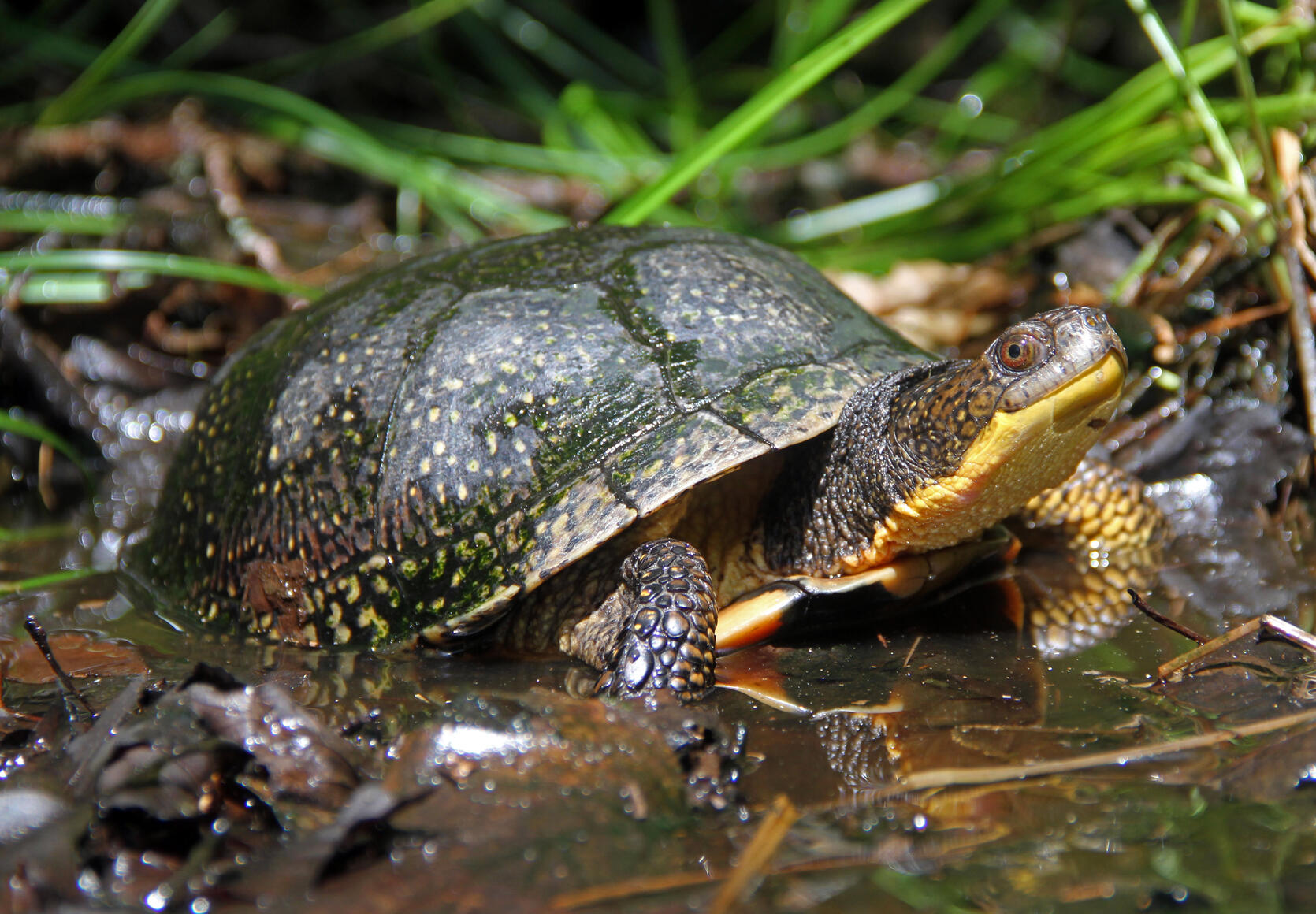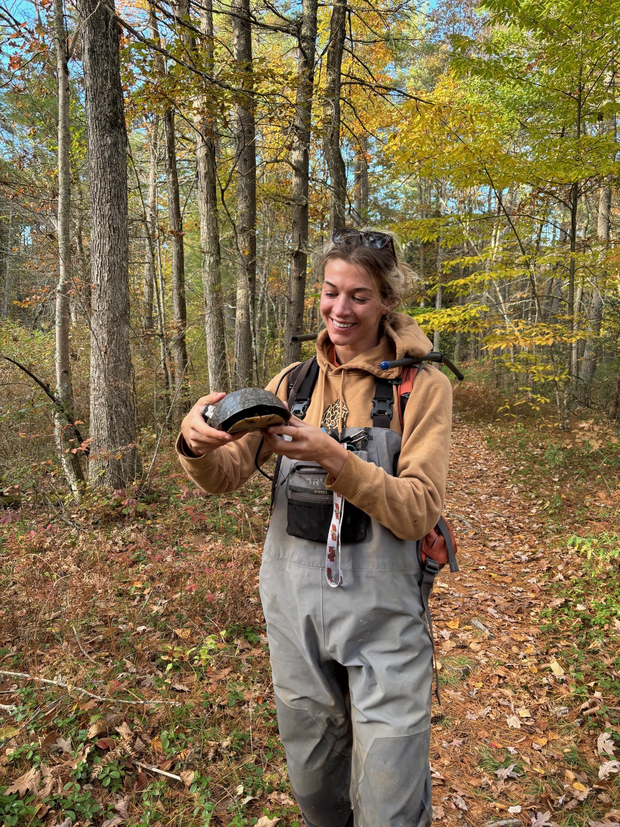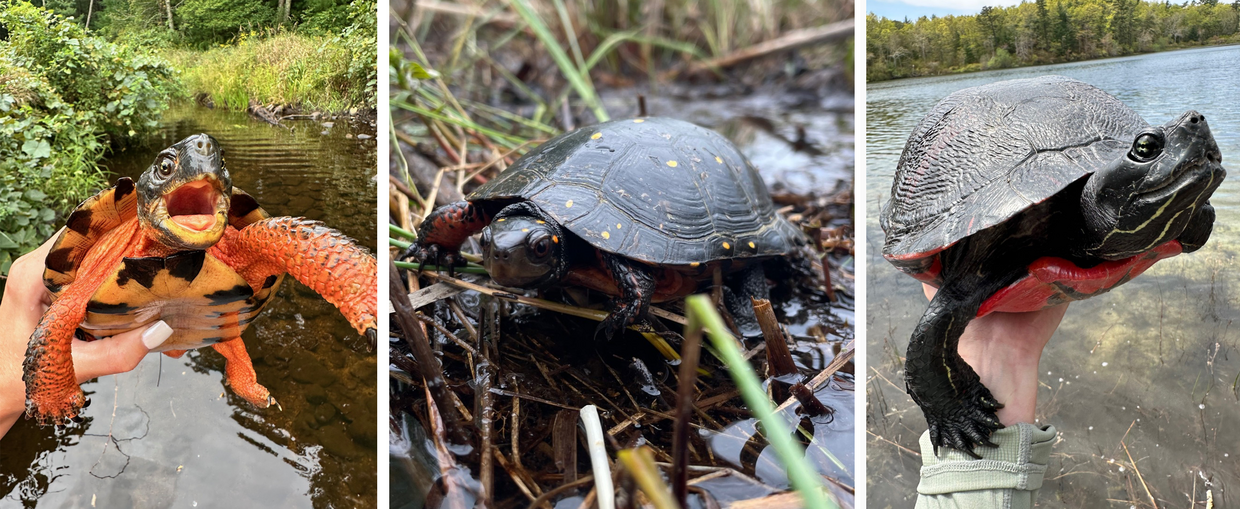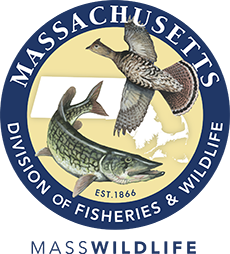- Division of Fisheries and Wildlife

Turtles are known for their shells, but a hard shell does little to protect them from threats like habitat loss, road mortality, pollution, and illegal collection. Six of the 10 native freshwater turtle species in the Commonwealth are listed under the Massachusetts Endangered Species Act (MESA).
For decades, MassWildlife has been a leader in rare turtle conservation—from successful species restoration and turtle habitat protection to regional conservation initiatives and public outreach. Collaborating with conservation partners, MassWildlife biologists work throughout the year to monitor populations, implement habitat management protocols, and protect vulnerable nests and hatchlings.
In this article, we’re tagging along with MassWildlife’s Freshwater Turtle Biologist, Michela Coury, to experience firsthand the challenges and rewards of working in the field through the changing seasons.
Spring: A busy start to the field season
For a field biologist studying turtles, spring and summer are the busiest seasons. During winter, many reptiles in the region, including turtles, enter a state of slowed metabolism and minimal activity called brumation. Freshwater turtles shelter in deeper waters or muddy pond bottoms and re-emerge when the weather gets warmer in spring—this is when field season kicks into high gear. Michela spends her days locating potential overwintering sites where turtles have taken refuge. She carefully captures and tags these turtles (with permits) with radio transmitters, which allows the team to track turtle movements, study habitat preferences, and gather critical data on seasonal patterns.
Nesting season: A critical time for turtle conservation
Late spring marks the beginning of nesting season for many freshwater turtles in Massachusetts. During this time, Michela’s focus shifts to protecting turtles from a variety of threats. Field staff reinforce rare turtle nesting sites to protect eggs from predators such as raccoons, skunks, and coyotes to help ensure the survival of hatchling turtles. Road mortality is a major threat to nesting females in spring as they often travel long distances, sometimes crossing roads to reach nesting sites. Michela works with the MassWildlife team as well as MassDOT to monitor turtle road mortalities and identify turtle crossing hotspots. She also collaborates with local towns to develop strategies to reduce turtle deaths.
One of MassWildlife’s most successful and longest-running conservation efforts is the headstart program for the federally endangered northern red-bellied cooter—a species at high risk of extinction. Biologists and cooperating partners give hatchlings a “head start” by raising them in a controlled environment during their first year. This allows the young turtles to grow large enough to avoid most predators once they are returned to the wild. This strategy significantly increases the turtles' chances of survival compared to wild hatchlings, which face numerous threats from the moment they emerge from their eggs.
As part of the headstart team, Michela works with landowners to protect nests of northern red-bellied cooters, monitors the hatchlings, and helps support the volunteer groups that care for the turtles during the headstarting process.
Summer: Monitoring road mortality and habitat management
The summer heat brings less activity for the turtles, but that doesn’t mean the work stops for our Freshwater Turtle Biologist. Michela is out every day in the harsh terrain and riverine systems, conducting basking surveys, protecting nests, and recording movements of tagged turtles.
Part of the job of a wildlife biologist is working with people. For Michela, this means engaging with landowners to encourage turtle-friendly agricultural and landscaping practices. These practices include adjusting the timing and frequency of mowing, creating turtle-safe buffers, and marking areas on the landscape where turtles are likely to be found.
Final note from the field
Each season brings a new challenge and different opportunities to make a positive impact on turtle populations here in Massachusetts and even small actions can make a difference. Every turtle counts and is important for maintaining viable populations; every set of human hands is also vital. Through collaboration with local communities, landowners, and other conservation partners, dedicated biologists like Michela work to ensure the survival of endangered turtle species. Learn more about the turtles of Massachusetts and how you can help.


